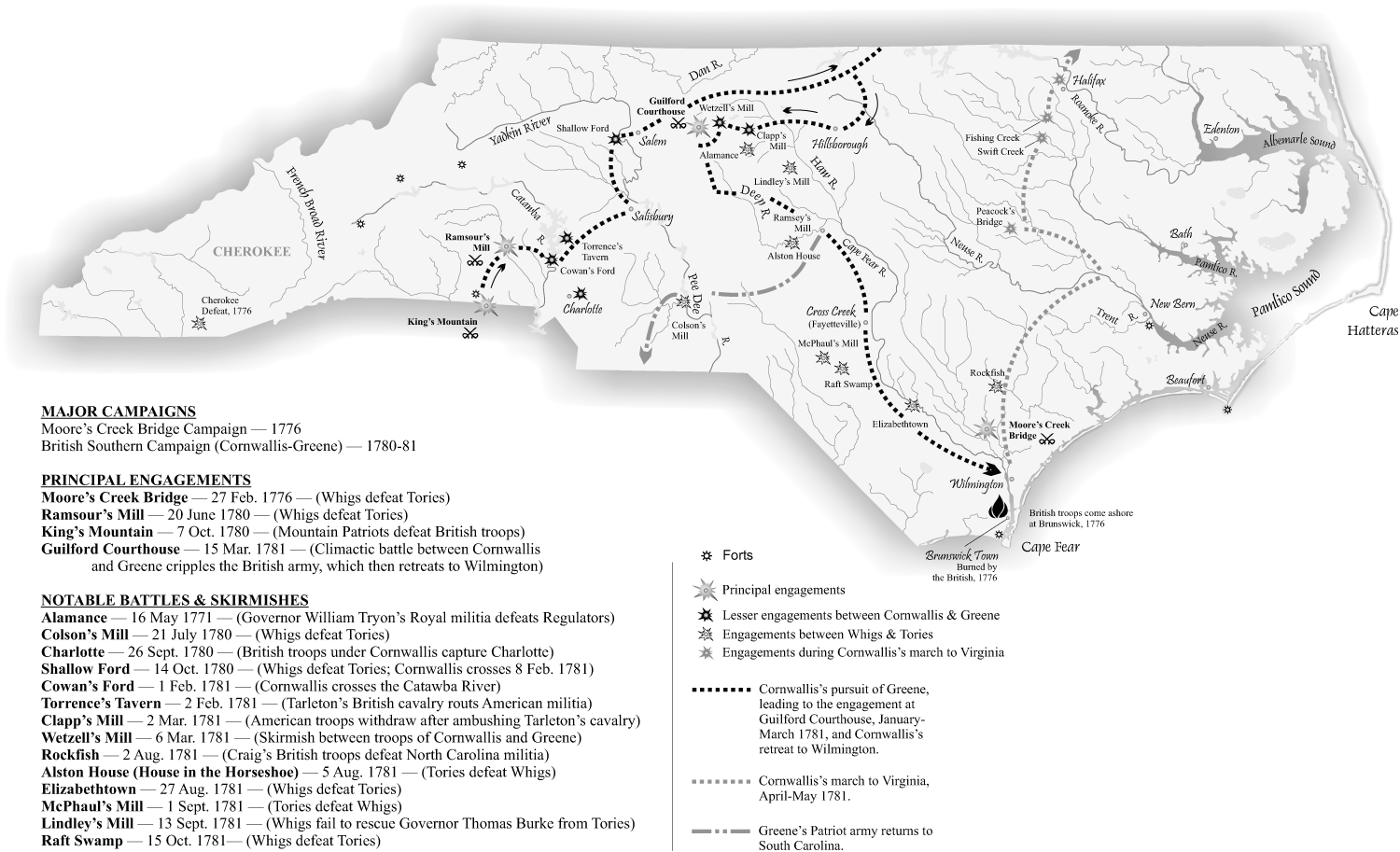In the spring of 1775, the organized protests in the colonies turned into organized war. Soon after, some revolutionary leaders began calling for a complete break with Britain — independence. Americans had come out of the French and Indian War in 1763 feeling pride in being a part of the greatest empire in the world. Now, barely a decade later, a majority of them wanted out.
North Carolinians were deeply divided in the War for Independence. In this chapter, you'll explore their words and deeds as they fought each other, declared themselves an independent state, and set up a new government. Whether that government truly reflected the principles they claimed to fight for was debated at the time — and is still debated today.
Section Contents
- Timeline of the Revolution 1775-1779
- The Mecklenburg Declaration
- Primary Source: The Mecklenburg Resolves
- Josiah Martin and His Exit from New Bern
- "Liberty to Slaves": The Response of Free and Enslaved Black People to Revolution
- Thomas Peters: Black Loyalist, Politician, and a Founding Father of Sierra Leone
- The Black Pioneers Loyalist Company
- Primary Source: Lord Dunmore's Proclamation
- Primary Source: A Virginian Responds to Dunmore's Proclamation
- The Battle of Moores Creek Bridge
- Primary Source: Mary Slocumb at Moores Creek Bridge: The Birth of a Legend
- A Call for Independence
- Primary Source: Minutes on The Halifax Resolves
- Primary Source: The Declaration of Independence
- North Carolina's Signers of the Declaration of Independence
- Primary Source: Plans for Democracy
- Primary Source: "Creed of a Rioter"
- Primary Source: The North Carolina Constitution and Declaration of Rights
- Nancy Hart, Revolutionary Woman

